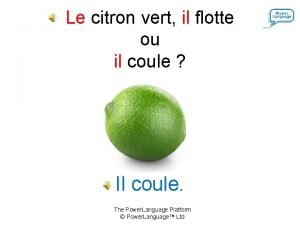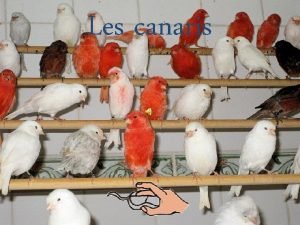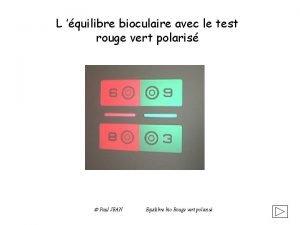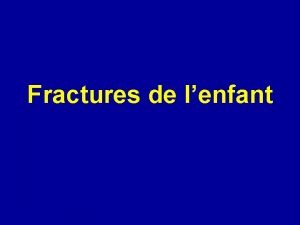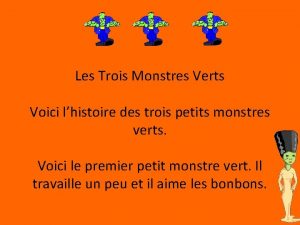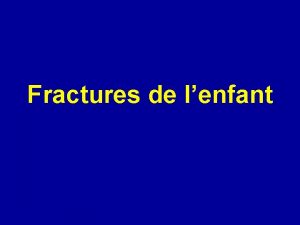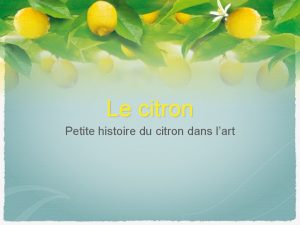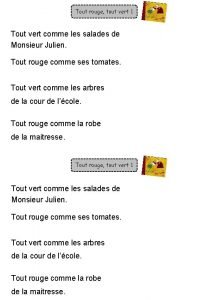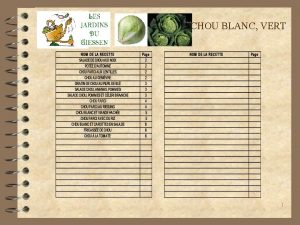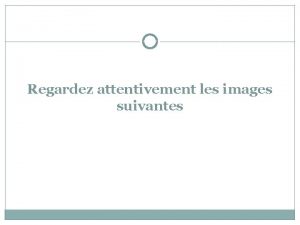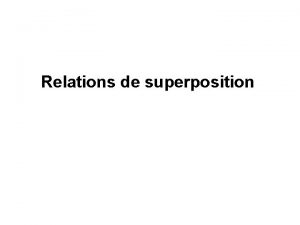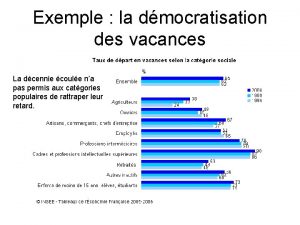Le citron vert il flotte ou il coule
















- Slides: 16

Le citron vert, il flotte ou il coule ? Il coule. The Power. Language Platform © Power. Language™ Ltd

il/elle flotte ou il/elle coule ? Complétez le tableau avec il ou elle et masculin ou féminin. Exemple: La pomme, elle flotte. Féminin Fruits il ou elle ? masculin ou féminin la pomme, elle flotte féminin Fruits il ou elle ? masculin ou féminin le grain de raisin, ------- coule la fraise, ------- coule la noix de coco, ------- flotte l'orange, ------- flotte la pêche, ------- flotte le citron vert, ------- coule le kiwi, ------- coule la poire, ------- flotte le citron, ------- flotte The Power. Language Platform © Power. Language™ Ltd

Pourquoi ? les explications Les différents facteurs: La densité Le volume La masse La forme La présence d’air The Power. Language Platform © Power. Language™ Ltd

Vocabulaire (5) • • • un résultat une explication un facteur la taille la forme la densité le volume la masse la présence d’air • • • A result An explanation A factor The size The shape The density The volume The mass The presence of air The Power. Language Platform © Power. Language™ Ltd

Les couleurs Can you look at the fruit and tell what colour(s) they are, in French. You will find a summary of colours on the next slide Here is an example for you: La poire: elle est jaune. The Power. Language Platform © Power. Language™ Ltd

Les couleurs • • • gris / grise noir / noire blanc / blanche marron jaune bleu / bleue vert / verte rouge orange violet / violette • • • Grey (masc / fem) Black (masc / fem) White (masc / fem) Brown (masc & fem) Yellow (masc & fem) Blue (masc / fem) Green (masc / fem) Red (masc & fem) Orange (masc & fem) Purple (masc / fem) The Power. Language Platform © Power. Language™ Ltd

Les adjectifs: masculin et féminin singulier Language tips Why don’t you have a look at Language tip, on the Platform, to find out about the masculine and feminine forms of adjectives, and complete the related activity. Les adjectifs (masculin, féminin, singulier) A short animation showing you the different forms adjectives can take in the masculine and feminine forms of the singular. Les adjectifs (masculin, féminin, singulier) - activité A short written exercice to practise using the different forms of adjectives in the masculine and feminine forms of the singular. The Power. Language Platform © Power. Language™ Ltd

Les articles définis et les articles indéfinis Language tips In this dossier, we use definite and indefinite articles. Have a look at the following language tips and activities: • Les articles définis An animation explaining the use of French definite articles LE / LA / L’ and LES. • Les articles définis - activité An activity to get you to practise using French definite articles LE / LA / L’ and LES. • Les articles indéfinis An animation explaining the use of French indefinite articles UN / UNE / DES. • Les articles indéfinis - activité An activity to get you to practise using French indefinite articles UN / UNE / DES. The Power. Language Platform © Power. Language™ Ltd

Les verbes: Les verbes en « er » L’impératif Language tips In this dossier, most of the verbs you are using are “er” verbs, such as flotter or couler. Why don’t you have a look at the following Language tips, on the Platform, to learn the different forms and complete the related activities. • Le présent - podcast This audio podcast will help you tackle the use of 90% of French verbs in the present tense. In this dossier, you are often using the impératif (command form). Why don’t you have a look at the following Language tips, on the Platform, to practise using the command form, and complete the related activities. • L’impératif A short animation to help you understand how commands are formed in French (it is recommanded to listen to “Le présent –er verbs” podcast beforehand). • L’impératif - activité A simple writing activity to practise giving commands to one person and to the whole class. The Power. Language Platform © Power. Language™ Ltd

Traduction (1) Slide Slide Slide Slide 4: What is it? It’s an apple. 5: What is it? It’s a strawberry. 6: What is it? It’s an orange. 7: What is it? It’s a lemon. 8: What is it? It’s a pear. 9: What is it? It’s a grape. 10: What is it? It’s a coconut. 11: What is it? It’s a kiwi. 12: What is it? It’s a peach. 13: What is it? It’s a lime. 15: Kim’s Game. What is missing? 16: Kim’s Game. What is missing? Look carefully…. 17: What’s missing. The Power. Language Platform © Power. Language™ Ltd

Traduction (2) Slide Slide Slide Slide 18: An orange. 19: What is missing? 20: A strawberry 21: What is missing? 22: A kiwi 23: What is missing? 24: A pear 25: What is missing? 26: A lemon. 27: What is missing? 28: A coconut. 29: What’s missing? 30: A grape. The Power. Language Platform © Power. Language™ Ltd

Traduction (3) Slide 31: What is missing? Slide 32: A lime. Slide 33: What is missing? Slide 34: A peach. Slide 35: What is missing? Slide 36: An apple. Slide 37: Masculine (un…. ) or feminine (une…)? Sort the fruits! Complete the two columns with the fruits and the matching indefinite article. Slide 38: Indefinite articles. The indefinite articles: Masculine, singular, un. For example: un kiwi (a kiwi). Feminine, singular, une. For example: une pomme (an apple). Slide 39: Which fruits float? Which fruits sink? The fruit is floating. The fruit is sinking. Slide 40: Predictions. In your opinion, which fruits float? Which fruits sink? For example: Does a strawberry float or sink? A strawberry floats. / A strawberry sinks. The Power. Language Platform © Power. Language™ Ltd

Traduction (4) Slide 41: Predictions. In small groups, indicate your predictions by completing the table with an x. Fruits Floats Sinks Fruits An apple A grape A strawberry A coconut An orange A peach A lime A kiwi A pear A lemon Floats Sinks Slide 42: Predictions. Does the fruit sink or float? Why? Because…. . It’s a small? It’s big? (gros = big and petit = small). Slide 43: Predictions. Does the fruit sink or float? Why? Because…. . It’s a heavy? It’s light? (lourd = heavy and léger = light). : The Power. Language Platform © Power. Language™ Ltd

Traduction (5) Slide 44: Does fruit X sink? Does fruit X float? Why? Example: In my opinion, an apple floats / sinks, because it’s big/small and it’s heavy / light. Your turn: In my opinion, a…………(fruit) / a ……. (fruit), sinks / floats because it is… and it is……. Slide 46: Experiments – observations. The verifications. Organise small groups. Get a container (a basin for example). Fill the basin with water. Now drop the fruits in one by one. Observe and complete the table. Slide 47: Experiments – observations. The verifications. Place the fruits in water and indicate your results on the table with an x. Fruits Floats Sinks Fruits An apple, it A grape A strawberry, it : An orange, it A coconut A lime, it A kiwi A pear, it A lemon A peach The Power. Language Platform © Power. Language™ Ltd Floats Sinks

Traduction (6) Slide 48: Masculine (le/l’…. = the) or feminine (la, l’…. = the). Sort the fruits! Complete the two columns with the correct fruits and the definite article. Slide 49: The definite articles: masculine, singular: le (the), for example: le kiwi (the kiwi). Feminine, singular: la (the), for example: la pomme (the apple). If it’s masculine and feminine singular starting with a vowel: l’ (the). For example: L’orange (the orange). Slide 52: Does fruit X sink? A recap. Slide 53: The apple, does it float or does it sink? It floats. Slide 54: The strawberry, does it float or does it sink? It floats. Slide 55: The orange, does it float or does it sink? It floats. Slide 56: The lemon, does it float or does it sink? It floats. Slide 57: The pear, does it float or does it sink? It floats. Slide 58: The grape, does it float or does it sink? It sinks. Slide 59: The coconut, does it float or does it sink? It floats. Slide 60: The kiwi, does it float or does it sink? It floats. The Power. Language Platform © Power. Language™ Ltd

Traduction (7) Slide 61: The peach, does it float or does it sink? It floats. Slide 62: The lime, does it float or does it sink? It sinks. Slide 63: Does it floats / Does it sinks? (il/elle in French depending on if the fruit is masculine or feminine) Slide 64: Why? Explanations. The different factors: the density, the volume / the mass / the shape / the presence of air. The Power. Language Platform © Power. Language™ Ltd
 Fruit citron vert
Fruit citron vert Les fruits qui flottent
Les fruits qui flottent Coule en suisse
Coule en suisse Tailwind airlines flotte
Tailwind airlines flotte Citron slabiky
Citron slabiky Agate opale jaune intensif
Agate opale jaune intensif Tarif bleu jaune vert
Tarif bleu jaune vert Verbe 1er groupe
Verbe 1er groupe Orange blanc vert
Orange blanc vert Test duochrome rouge-vert
Test duochrome rouge-vert Fracture en bois vert image
Fracture en bois vert image Sbarr example
Sbarr example Colre
Colre Vert
Vert Jeux de petit monstre vert qui mange des bonbons
Jeux de petit monstre vert qui mange des bonbons épiphysiodèse
épiphysiodèse Toit tout vert
Toit tout vert
